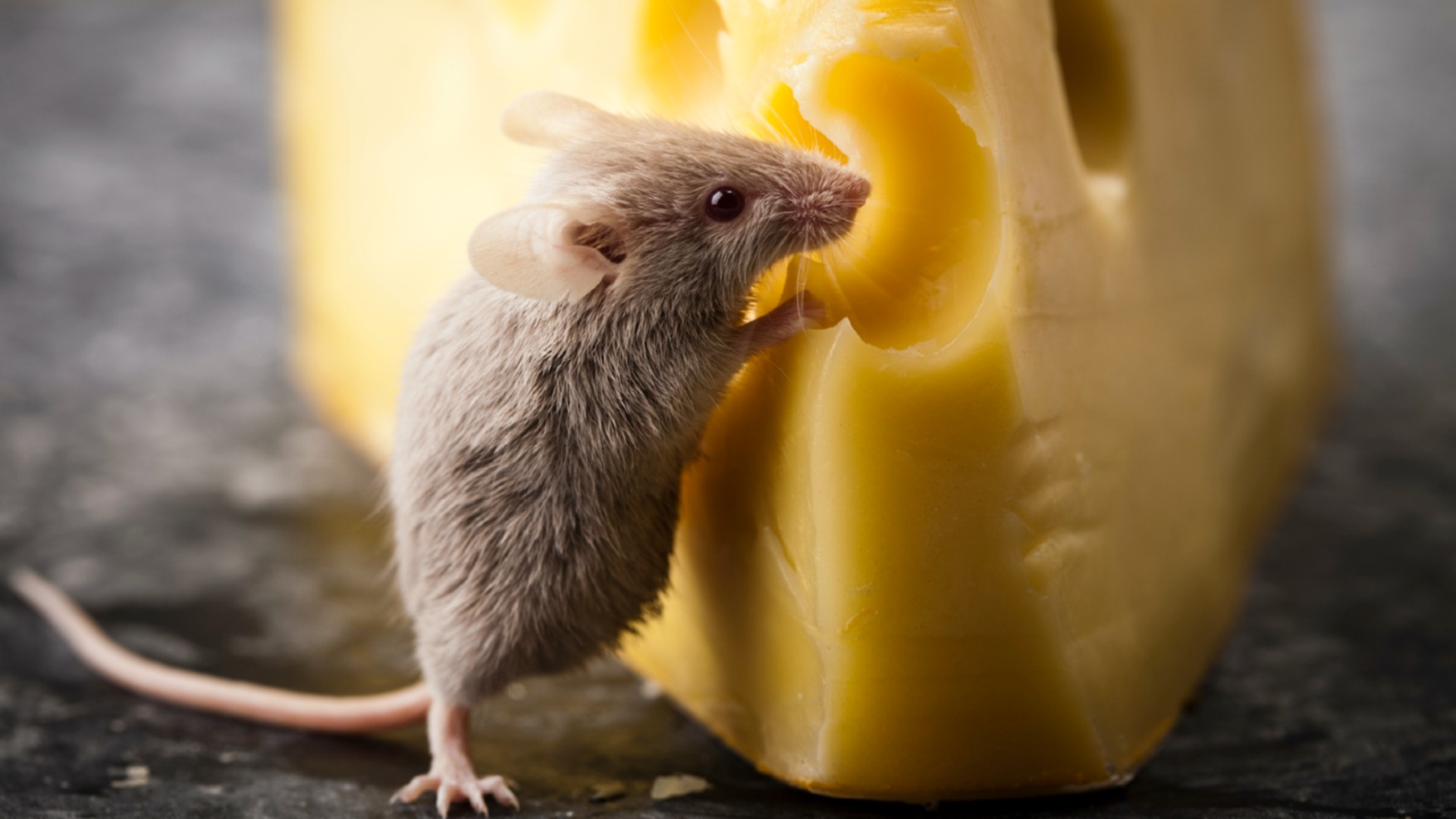Do mice really like cheese?
Do mice like eating cheese, or is it a myth?
From "Tom and Jerry" to "The Farmer in the Dell," pop culture is full of mice that love cheese. In fact, there's even a mouse mascot with the food in his name: Chuck E. Cheese.
But do real mice actually crave a nutty, odorous Gruyere? Not exactly.
To start, not all mice are the same. Mice are a diverse group that make up several different genera, including Apodemus, the field mice, and Mus, or standard mice. Each mouse species is accustomed to its own habitat, like the desert pygmy mouse (Mus indutus) of southern Africa or the steppe mouse (Mus spicilegus) of Eastern Europe. But the mouse that people are most familiar with is the house mouse (Mus musculus).
The house mouse probably evolved in Central and Southern Asia, said Megan Phifer-Rixey, an evolutionary biologist at Drexel University in Philadelphia who studies the species. But with the help of humans, these rodents have spread worldwide — and when it comes to food, they're not particularly picky.
Related: Do elephants really 'never forget'?
A house mouse will eat pretty much anything that's nearby, Phifer-Rixey said. That could include grains, insects, trash — and yes, cheese, if it's available. But cheese is, by no means, a mouse's favorite food, she said.
Instead, what house mice really seem to love is peanut butter. "They have a good sense of smell, and it has a pretty strong odor," Phifer-Rixey said. Plus, peanut butter has plenty of protein and fat, which mice find attractive, she added.
Get the world’s most fascinating discoveries delivered straight to your inbox.
Peanut butter is also recommended by many exterminators and pest-control specialists as mouse bait. Phifer-Rixey said she's heard of some people trying to trap house mice by mixing bacon bits into the peanut butter, and for her research, she'll add in some oats to prevent the traps from getting too sticky.
Where did this cheesy story originate?
So, if mice are merely ambivalent about cheese, where did the idea of cheese-loving mice come from? That question, unfortunately, doesn't seem to have a definitive answer.
One seemingly unproven theory floating around the internet is that people once kept their cheese on open shelves, as opposed to other food stored in jars or hanging from the ceiling. Because the cheese was readily available to mice, people might have seen mice eating their cheese, leading to the modern trope — or so the story goes.
As for when the idea originated, it may go back hundreds or thousands of years. Some internet sleuths have found that the Roman philosopher Lucius Annaeus Seneca, who lived in the first century A.D., seemed to take for granted that mice love cheese.
"'Mouse' is a syllable," the philosopher wrote in a letter to his friend Lucilius, according to a translation of his works by Richard Mott Gummere, a former Latin professor at Haverford College in Pennsylvania. "Now a mouse eats its cheese; therefore, a syllable eats cheese."
So it's possible that this story about mice and cheese has existed for as long as mice and humans (and cheese) have coexisted, from the halls of ancient Rome to the rodent-inspired children's arcades of modern suburban America.

Ethan Freedman is a science and nature journalist based in New York City, reporting on climate, ecology, the future and the built environment. He went to Tufts University, where he majored in biology and environmental studies, and has a master's degree in science journalism from New York University.




